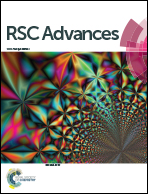Synthesis and biological evaluation of novel asiatic acid derivatives with anticancer activity†
Abstract
Asiatic acid (AA) is a pentacyclic triterpenoid with recognized anticancer properties. Structural modification of AA may afford derivatives with improved anticancer potency. Hence, in this paper, a series of new lactol and A-nor AA derivatives were prepared, and their antiproliferative activities against several human cancer cell lines and a non-tumoral fibroblast cell line (BJ) were tested. Among all the derivatives tested, compound 24 proved to be the most active compound, with IC50 values ranging from 0.11 μM to 0.65 μM for cancer cell lines. The molecular mechanisms underlying its antiproliferative activity were further investigated using the HeLa cell line. Our results showed that treatment of HeLa cells with compound 24 led to cell-cycle arrest at the G0/G1 phase, which was associated with an upregulation of p21cip1/waf1 and p27kip1 and a downregulation of cyclin D3. Moreover, compound 24 induced apoptotic HeLa cell death via the activation of caspase-9, caspase-8, and caspase-3. The downregulation of the Bcl-2 and Bid proteins and the upregulation of the Bax protein suggest that the mitochondrial pathway is activated during the apoptotic process.


 Please wait while we load your content...
Please wait while we load your content...